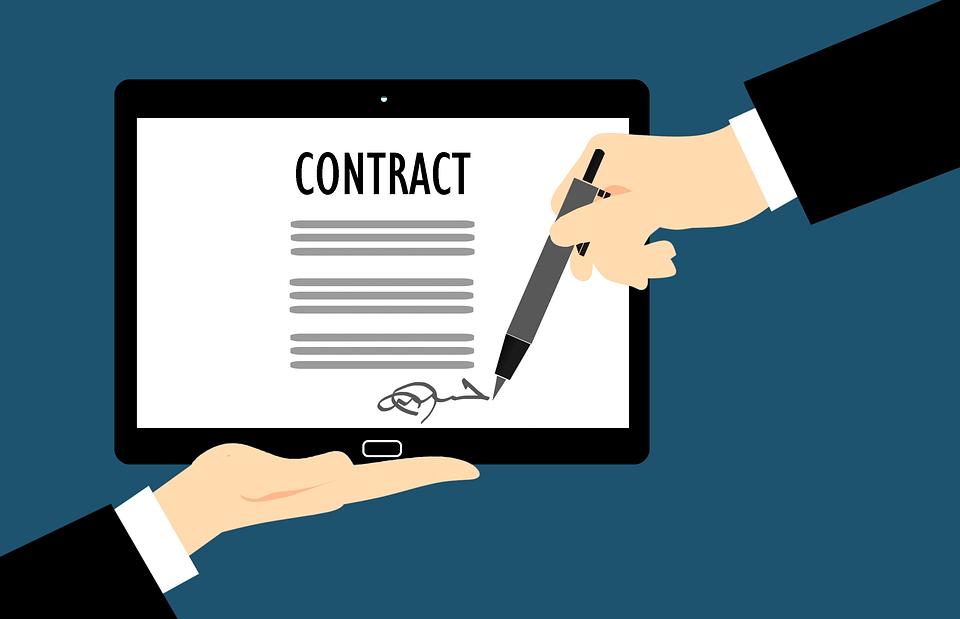Everything You Need To Know About Requirements Contracts

When entering a contract, there are a number of factors that you need to consider in order to ensure that the contract will work in favor of yourself and any other parties involved.
A large part of requirements contracts is that both parties have to act in good faith. It’s important for both parties to be clear on the demands and conditions of the contract. Using a digital contract management software like SignHouse can streamline the process, assisting the parties in keeping on top of their legal documents.
In this article, we’ll cover the ins and outs of requirements contracts, to help you determine whether they’re suitable for your needs.
What is a Requirements Contract?
Requirements contracts are written agreements between two parties who seek to acquire, and provide goods and services. They can be completed in written form, or using digital software like SignHouse for convenience.
A requirements contract is a way to ensure a reliable supply between a buyer and a seller, without specifying an exact quantity. Requirements contracts are forms of exclusive dealings, where the seller must meet the demands of the buyer. In exchange, the buyer only uses the services of the seller. If the buyer uses an alternative source, this would be a breach of contract. It is the specification of exclusivity that separates requirements contracts from similar alternatives.
Requirements contracts help to ensure a reliable supply of goods or services at a prearranged price. This is useful when the potential demand is unknown, as cost negotiations can be done without exact numbers being determined and they should not have to be negotiated if demand fluctuates significantly.
An example of when requirements contracts are useful is when a grocery store enters into a contract with a farmer. The farmer will supply the necessary quantity of produce that the store needs. The farmer is protected by the contract in that they may sue the grocery store if they get their supplies from an alternative source, as this is a breach of contract.
Examples of Requirements Contract
There are many resources online that offer contract templates and sample clauses. It is useful to familiarize yourself with the nuances of contracts and use what available resources are at your disposal. This can greatly increase the benefits and protections you can put in place for yourself when writing up your own.

The sample above demonstrates the exclusivity aspect of requirements contracts but includes a clause that protects the County. If the contractor cannot maintain the delivery of services in the necessary timeframe, the County may use another source without breaching the terms of the contract.
Adding additional clauses to your requirements contracts is an important step to mitigate any potential risks to either party in the case of any undesirable circumstances.

The above source details the fact that the quantity of purchases isn’t guaranteed, meaning there are no specific requirements that the buyer must meet. These details are important to remember when drawing up your own requirements contract, especially as the buying party.
Requirements Contract VS Output Contract
If a requirements contract doesn’t quite apply to your needs, a suitable alternative may be an output contract. The difference between them is that the buyer must agree to purchase the seller’s entire output of goods within a certain time period in an output contract.
A good example of this is seasonal produce. Smaller farms often sell all of their seasonal produce to a single buyer, usually supermarkets. In this situation, an output contract would be useful.
Output contracts take the exclusivity aspect further, as the buyer is guaranteed to be the only recipient of the goods. However, this can work to the buyer’s detriment by leaving them with excess products if the demand doesn’t match the supply.
The nature of the products involved and/or the buyer’s customer base will likely be the main deciding factor when determining which type of contract will be best for your situation.
Requirements contracts are a better choice when the potential demand for the goods and services is unknown to the buyer, as the supply is tailored to the specific needs of the buying party. They’re more flexible, if there are fluctuating demands, as it prevents the buyer from being contractually obliged to maintain a higher volume of purchases than necessary.
Why are Requirements Contracts Important?
Requirements contracts, with additional clauses for the sake of protection, are an important part of trading between two parties. They offer a number of benefits that we will cover here.
Secure a Stable Supply of Goods
From the perspective of the buyer, requirements contracts are a necessity when attempting to secure a stable supply of goods that can fluctuate with your current demand. Adjusting your supply to meet market projections throughout the year is an easy way to have a sustainable business model that maximizes profit while limiting risk and waste.
Stability within the buyer’s supply chain is an essential part of good trading practices and maintaining a good reputation. Having a contract in place grants you easy and consistent access to the goods and services you need to run your business smoothly.
Manage Inventory Risk
As you can adjust the quantity of your supply, requirements contracts offer an additional safety net for buyers, when it comes to potential inventory risks. You can constantly update your supply needs to avoid issues with surplus stock that you’re unable to sell.
From the sellers perspective, your goods will maintain their value while you’re meeting demand. The seller is protected from oversaturating the market with excess stock, as requirements contracts follow a stable supply and demand structure.
It Serves as Proof and Certainty
Having a meticulously drafted contract is crucial. It needs to clarify the terms and conditions of your agreement in writing. Ensuring your conditions beforehand, protects both parties from the other acting in bad faith, or violating the agreement. The written clarification of the parties rights, obligations, and duties, helps to facilitate the practice of good faith.
Minimizing the risk of any misunderstandings and disputes, helps to maintain the professional relationship between the two parties as well as protecting their businesses.
How to Create a Contract?
Step #1: Include the Contact Information Of Both Parties
A key feature of any contract is to have accurate and up-to-date contact information for all parties involved. This establishes and solidifies the identity of both parties.
The details needed on contracts are typically the legal business names, physical and billing addresses, and the contact details of both the businesses themselves and the client.
Step #2: Specify terms of the contract
This is the area where you’ll be discussing what each party gets. As it’s a requirements contract, this will outline information on the trade deal. Rough estimates of the buyer’s expected quantities should be provided, as well as confirmation from the seller that they can meet demands.
Step #3: Establish payment terms
Generally in a requirements contract, payment is usually received once the buyer has their deliverables. Payment schedules and methods can also be detailed here.
Step #4: Contract end date
Nobody wants to be tied down to a contract forever and this is especially true of requirement contracts. It’s important to set the start date and end date of your partnership. Once the contract ends, it can be resigned, reworked or abandoned, depending on how fruitful the partnership was.
Step #5: Conditions for breaking contract
Your business needs to be protected from any breaches in the contract. For the buyer in a requirements contract, this might include withholding payment if goods aren’t delivered, or voiding the contract if the seller can’t meet quantity demands. Protections are also put in place for the seller too, like ensuring the buyer purchases similar quantities of goods every order and that these purchases are non-refundable should the contract break down.
Step #6: Signatures
The final step to make a contract official is for a representative from both parties to sign it. This can be done in person, or digitally by using software like SignHouse, which simplifies and streamlines the process of reviewing and signing contracts.
Conclusion
Now that you are informed about requirements contracts, you should be more confident in your choice of whether it is the right type of contract for you.
As you progress onto the next steps with creating or signing your contract, you should make use of any available resources that can help to strengthen the protections you can put in place within the terms of your contract. You can refer to legal templates to ensure that you adhere to a professional standard, and look at existing samples for any clauses that could be of use to you.
If you plan to take a more modern approach and approach your contract digitally, ensure the legitimacy of the contract and its signing by using trusted software like SignHouse.
FAQs
Can I sign a PDF contract online?
Yes, and it's 100% free. Upload your PDF contract to SignHouse, create your free electronic signature, and then drag and drop it on the PDF.
Can you legally sign a contract digitally?
Yes, at SignHouse, we only work with 100% legally binding signatures for digital contracts.








